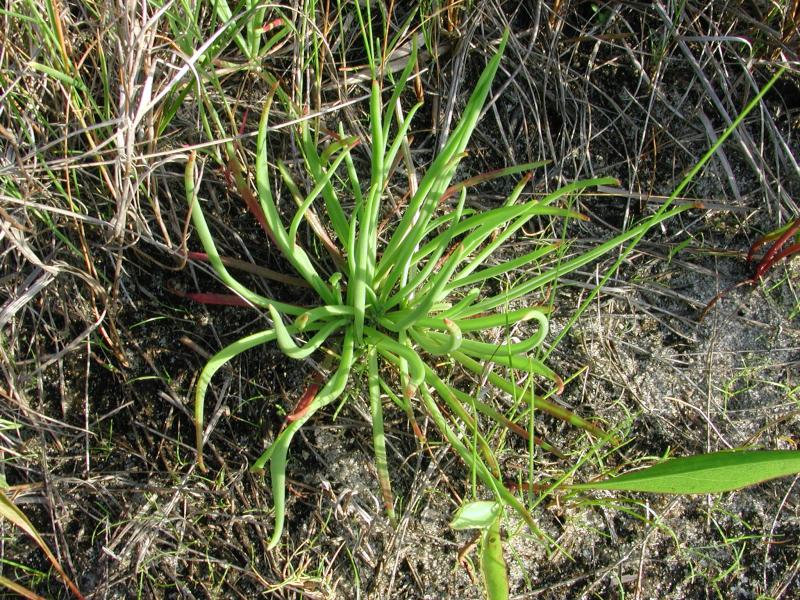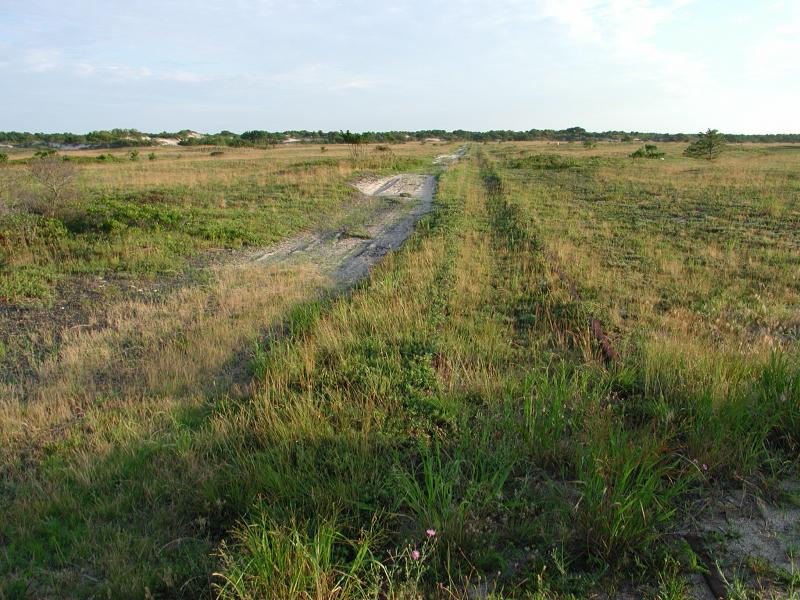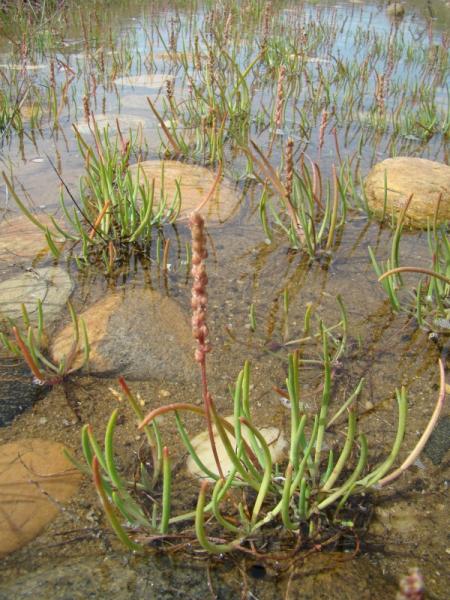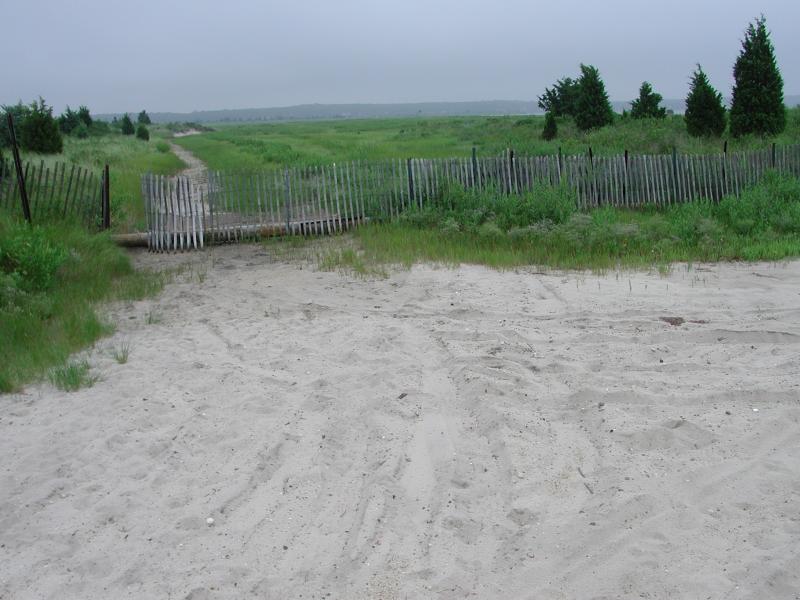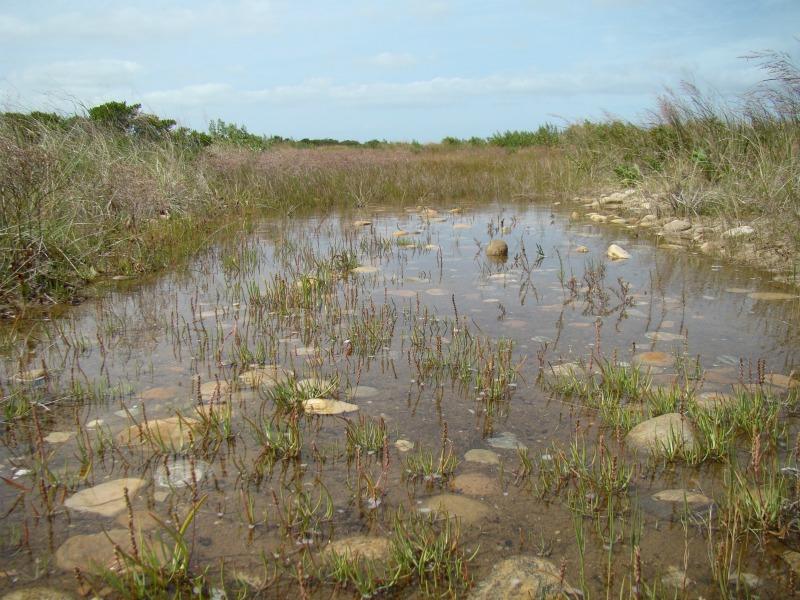Seaside Plantain
Plantago maritima var. juncoides (Lam.) Gray
- Class
- Dicotyledoneae (Dicots)
- Family
- Plantaginaceae (Plantain Family)
- State Protection
- Threatened
Listed as Threatened by New York State: likely to become Endangered in the foreseeable future. For animals, taking, importation, transportation, or possession is prohibited, except under license or permit. For plants, removal or damage without the consent of the landowner is prohibited.
- Federal Protection
- Not Listed
- State Conservation Status Rank
- S2S3
Imperiled or Vulnerable in New York - Very vulnerable, or vulnerable, to disappearing from New York, due to rarity or other factors; typically 6 to 80 populations or locations in New York, few individuals, restricted range, few remaining acres (or miles of stream), and/or recent and widespread declines. More information is needed to assign either S2 or S3.
- Global Conservation Status Rank
- G5T5
Secure globally - Both the species as a whole and the subspecies/variety are common in the world; widespread and abundant (but may be rare in some parts of its range).
Summary
Did you know?
This is the only Plantago with narrow leaves which occurs in salt marshes. It can occur in groups of many thousands of plants.
State Ranking Justification
There are 15 existing populations and about half of them have over 100 plants each. One population has over 100,000 plants. The smaller populations are in areas with little human disturbance. There are about four other historical occurrences, so more populations are known now than were known in the past.
Short-term Trends
Existing populations seem stable since many of them have been visited more than once and populations remain the same or have grown slightly.
Long-term Trends
Long-term trends seem stable since most populations that were ever documented are still known and doing well.
Conservation and Management
Threats
The main threat to this species is the expansion of nearby Phragmites populations into its habitat. Some plants occur along sandy trails and may be trampled.
Conservation Strategies and Management Practices
Control Phragmites invasions in the salt marshes where it exists and prevent new incursions. Natural buffers should be established around the salt marshes to decrease pollution runoff and other direct human disturbances.
Research Needs
There are no research needs at this time.
Habitat
Habitat
In New York, Seaside plantain has been found growing in high salt marshes, brackish meadows, and on dunes formed from dredge spoilings (New York Natural Heritage Program 2010). Saltmarshes, coastal beaches and rocks (Haines 1998). Salt marshes, beaches, and coastal rocks (Gleason and Cronquist 1991).
Associated Ecological Communities
- Brackish meadow
(guide)
A moist, moderately well-drained brackish (salinity 0.5-18 ppt) perennial grassland with occasional isolated shrubs that is typically situated in a belt at the upper edge of salt marshes bordering sandy uplands, but may occupy large portions of interdunal basins. The community usually develops in areas with a unique combination of soils and hydrology, on deep deposits of periodically windblown or overwashed gleyed sands that are usually flooded only during spring tides and during major coastal storms, approximately two to three times per year.
- Dredge spoils
An upland site where dredge spoils have been recently deposited. On sandy dredge spoils along the Hudson River, characteristic species of early successional deposits include winged pigweed, lovegrass, purple sandgrass, tall crabgrass, and field sandbur; cottonwood is common on late successional deposits. Maritime dredge spoil islands along the seacoast of Long Island provide nesting habitat for herring gull, least tern, and piping plover.
- High salt marsh
(guide)
A coastal marsh community that occurs in sheltered areas of the seacoast, in a zone extending from mean high tide up to the limit of spring tides. It is periodically flooded by spring tides and flood tides. High salt marshes typically consist of a mosaic of patches that are mostly dominated by a single graminoid species.
- Marine rocky intertidal*
(guide)
A community inhabiting rocky shores that are washed by rough, high-energy ocean waves. Characteristic organisms are attached marine algae, mussels, sea stars, urchins, and barnacles that can withstand the impact of the waves and periodic desiccation. Examples of this community in New York typically have gently sloping rocky shores comprised of boulders (0.25 to 3 m diameter) and/or cobbles (6.4 to 25 cm). Bedrock outcrops may be present in a few examples, but not to the extent or as steep as those described in other New England states, such as Maine. The community is typically rich in species. Attached organisms cover usually more than 60% of the substrate, especially at the lower intertidal zone.
- Maritime dunes
(guide)
A community dominated by grasses and low shrubs that occurs on active and stabilized dunes along the Atlantic coast. The composition and structure of the vegetation is variable depending on stability of the dunes, amounts of sand deposition and erosion, and distance from the ocean.
* probable association but not confirmed.
Associated Species
- Agalinis purpurea (purple agalinis)
- Ammophila breviligulata (beach grass)
- Atriplex prostrata (seaside orach)
- Baccharis halimifolia (groundsel-tree)
- Bolboschoenus robustus (sea-coast bulrush)
- Bromus tectorum (cheat grass, downy brome, downy chess)
- Cakile
- Cycloloma atriplicifolium (winged-pigweed)
- Cyperus filicinus (fern flat sedge)
- Danthonia spicata (poverty grass)
- Distichlis spicata (salt grass)
- Eupatorium hyssopifolium (hyssop-leaved thoroughwort)
- Fimbristylis castanea (marsh fimbry)
- Hudsonia tomentosa (beach-heather)
- Iva frutescens (salt marsh-elder)
- Juncus
- Juncus gerardii
- Juniperus virginiana
- Lechea maritima
- Limonium carolinianum (sea-lavender)
- Myrica gale (sweet gale)
- Opuntia humifusa (eastern prickly-pear)
- Panicum virgatum (switch grass)
- Parthenocissus quinquefolia (Virginia-creeper)
- Phragmites australis (old world reed grass, old world phragmites)
- Pityopsis falcata (sickle-leaved golden-aster)
- Pluchea odorata (salt marsh-fleabane)
- Polygonella articulata
- Prunus maritima (beach plum)
- Rosa carolina
- Sabatia stellaris (sea-pink)
- Salicornia bigelovii (Bigelow's glasswort)
- Salicornia depressa (slender glasswort)
- Schizachyrium scoparium
- Schoenoplectus americanus (chair-maker's bulrush)
- Smilax glauca (white-leaved greenbrier)
- Solidago sempervirens (northern seaside goldenrod)
- Spartina alterniflora (smooth cord grass)
- Spartina patens (salt-meadow cord grass)
- Strophostyles helvula
- Suaeda calceoliformis (horned sea-blite)
- Symphyotrichum subulatum
- Symphyotrichum tenuifolium
- Toxicodendron radicans
- Triglochin maritima (sea arrow-grass)
- Triplasis purpurea
Range
New York State Distribution
This salt marsh wildflower grows mainly in Suffolk County, but it has also been found in Queens County. There are historical records from Nassau County, and it is considered extirpated from Manhattan Island where there was one locality, and from Onondaga County where it grew in the inland salt marshes.
Global Distribution
It ranges across Canada and extends down the East Coast coastal plain from Maine to the Delmarva Peninsula. It extends down the West Coast from the coast of Washington south to California.
Identification Comments
General Description
Seaside Plantain is an herbaceous perennial growing from a basal rosette. The many fleshy leaves are all basal, linear and entire, and are about a centimeter wide and up to 15 centimeters long. The flower stalks grow from the center of the clump up to twenty centimeters tall, and are topped by a spike covered with many tiny, hairy, greenish-brown flowers with protruding brown stamens. These mature into small, green, egg-shaped fruits. (Gleason and Cronquist 1991, Haines 1998).
Best Life Stage for Proper Identification
Seaside plantain is most conspicuous when flowering or fruiting but may also be identified from only the leafy rosette.
Similar Species
There are thirteen other species of Plantago in New York. Only three of these (none which are found in salt marshes) have linear leaves, as does P. maritima: Plantago psyllium, Plantago aristata, and Plantago patagonica (all three of which are non-native species). P. psyllium has leaves borne oppositely on the stem and only one to three millimeters wide. P. aristata and P. patagonica are both annual or biennial species. P. aristata has conspicuous bracts exceeding the flowers and fruits, and the the leaves and infloresence of P. patagonica are obviously hairy.
Best Time to See
Seaside plantain flowers from late June through early August, and the fruits may persist into November.
- Flowering
- Fruiting
The time of year you would expect to find Seaside Plantain flowering and fruiting in New York.
Seaside Plantain Images
Taxonomy
Seaside Plantain
Plantago maritima var. juncoides (Lam.) Gray
- Kingdom Plantae
- Phylum Anthophyta
- Class Dicotyledoneae
(Dicots)
- Order Plantaginales
- Family Plantaginaceae (Plantain Family)
- Order Plantaginales
- Class Dicotyledoneae
(Dicots)
- Phylum Anthophyta
Additional Common Names
- Saltmarsh Plantain
- Seashore Plantain
Synonyms
- Plantago juncoides Lam.
- Plantago maritima ssp. juncoides (Lam.) Hulten
- Plantago oliganthos Roem. & Schult.
Additional Resources
Best Identification Reference
Gleason, Henry A. and A. Cronquist. 1991. Manual of Vascular Plants of Northeastern United States and Adjacent Canada. The New York Botanical Garden, Bronx, New York. 910 pp.
Other References
Crow, Garrett E. and C. Barre Hellquist. 2000. Aquatic and Wetland Plants of Northeastern North America: A revised and enlarged edition of Norman C. Fassett's a Manual of Aquatic Plants. Volume One: Pteridophytes, Gymnosperms, and Angiosperms: Dicotyledons. The University of Wisconsin Press. Madison, Wisconsin. 536 Pages.
Fernald, M.L. 1950. Gray's manual of botany. 8th edition. D. Van Nostrand, New York. 1632 pp.
Holmgren, Noel. 1998. The Illustrated Companion to Gleason and Cronquist's Manual. Illustrations of the Vascular Plants of Northeastern United States and Adjacent Canada. The New York Botanical Garden, Bronx, New York.
Mitchell, Richard S. and Gordon C. Tucker. 1997. Revised Checklist of New York State Plants. Contributions to a Flora of New York State. Checklist IV. Bulletin No. 490. New York State Museum. Albany, NY. 400 pp.
New York Natural Heritage Program. 2010. Biotics database. New York Natural Heritage Program. New York State Department of Environmental Conservation. Albany, NY.
New York Natural Heritage Program. 2024. New York Natural Heritage Program Databases. Albany, NY.
Weldy, T. and D. Werier. 2010. New York flora atlas. [S.M. Landry, K.N. Campbell, and L.D. Mabe (original application development), Florida Center for Community Design and Research http://www.fccdr.usf.edu/. University of South Florida http://www.usf.edu/]. New York Flora Association http://newyork.plantatlas.usf.edu/, Albany, New York
Links
About This Guide
Information for this guide was last updated on: February 24, 2011
Please cite this page as:
New York Natural Heritage Program. 2024.
Online Conservation Guide for
Plantago maritima var. juncoides.
Available from: https://guides.nynhp.org/seaside-plantain/.
Accessed July 26, 2024.
